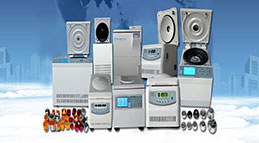Gas-liquid dispersion and reaction problems are often encountered in the application of chemical and pharmaceutical magnetic high pressure autoclaves, such as liquid phase catalysis of nitroaromatics, fatty nitriles, alkenes and alkynes, hydrogenation reactions, alkylation reactions, carbonylation reaction, oxidation reaction, etc. The common feature is that the reaction rate is controlled by gas-liquid mass transfer, and gas-liquid mass transfer involves processes such as gas dispersion, gas circulation, and solid catalyst suspension, and the problem becomes more complicated.
Due to the incompatibility of gas and liquid and the very large difference in density, unreacted gas in the gas-liquid reactor accumulates in the upper space of the high pressure autoclave, which seriously affects the reaction rate and efficiency. At the same time, the uneven suspension of the solid catalyst also restricts the reaction rate. In order to increase the reaction rate, the industry generally adopts three methods: gas external circulation, liquid external circulation and gas internal circulation. The three methods are fully used in magnetic high pressure autoclaves, hydrogenation high pressure autoclaves, and magnetic drive high pressure autoclaves.
The first method: the gas external circulation is to lead the reaction gas from the gas phase space, and the gas is pressurized by the compressor and then introduced from the bottom of the high pressure autoclave. With the cooperation of the magnetic stirrer, a large gas holding capacity and contact area can be obtained, thereby increasing the reaction rate, which has the advantage of being able to obtain any amount of gas circulation. But the disadvantage is that a large amount of hydrogen circulation equipment is required, which increases the complexity of the equipment and the capital investment.
The second method: the liquid external circulation is to use a centrifugal pump to extract the reaction liquid from the bottom of the reactor. By sucking the reaction gas in the gas phase space of the high pressure autoclave, the materials are fully mixed and dispersed, and very fine bubbles can be obtained, which greatly improves gas-liquid contact area and reaction rate. The advantages of the liquid external circulation type are fast reaction rate, continuous production, convenient heat transfer, etc., but the disadvantage is that the energy consumption is large and the requirements for the circulating pump are very strict.
The third method: the gas-liquid internal circulation reactor is a self-suction gas-liquid reactor. It is one of the core technologies of the gas-liquid reactor. It is a kind of reaction equipment which can absorb the gas in the upper space of high pressure autoclave for gas-liquid contact without additional gas conveying machinery. The reaction equipment for gas-liquid contact uses a specially designed hollow turbine agitator to continuously inhale the reaction gas on the liquid surface while mixing the material and liquid to achieve the purpose of gas-liquid circulation and dispersion. At the same time, the combined axial flow paddle can combine the gas with the liquid. The solid catalyst is uniformly dispersed in the high pressure autoclave to achieve the purpose of rapid reaction.
Hot Scientific Instrument Recommendation

Nine Maintenance Methods for Refrigerated Centrifuges to Help You Extend the Life of the Instrument
Mar 22,2021
Several Methods of the Centrifugation of High Speed Centrifuge
Mar 08,2021
The Difference between High Speed Centrifuge and Low Speed Centrifuge
Mar 15,2021
Welcome your presence! You can send us an email to know more about our medical laboratory equipments. We will get in touch with you within 24 hours.